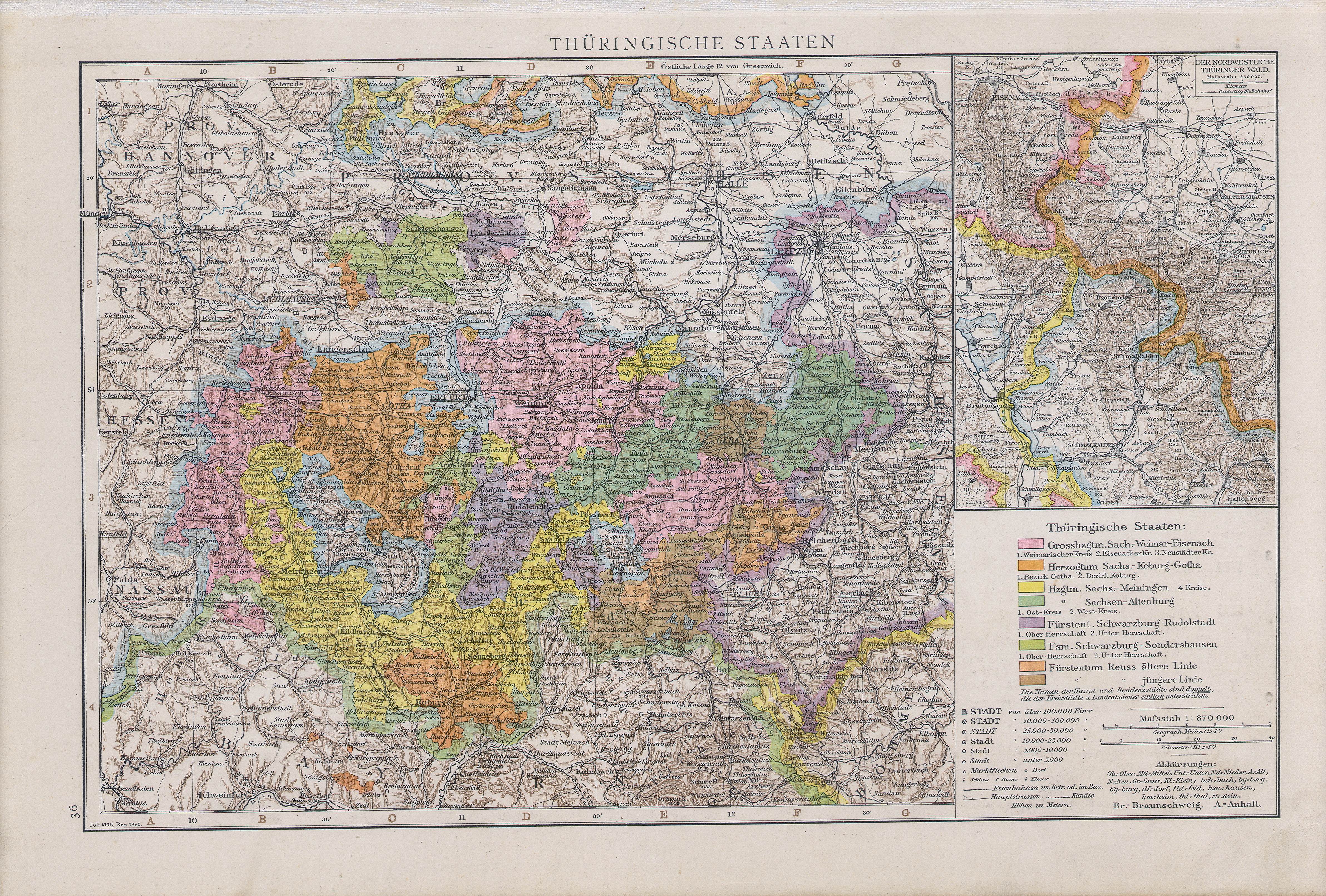Thuringia
 Thuringia,; }} officially the Free State of Thuringia, }} is one of Germany's 16 states with 2.1 million people, its 12th-largest by population, and with 16,171 square kilometers, its 11th-largest in area.
Thuringia,; }} officially the Free State of Thuringia, }} is one of Germany's 16 states with 2.1 million people, its 12th-largest by population, and with 16,171 square kilometers, its 11th-largest in area.Erfurt is the capital and largest city. Other cities include Jena, Gera and Weimar. Thuringia is bordered by Bavaria, Hesse, Lower Saxony, Saxony-Anhalt, and Saxony. It has been known as "the green heart of Germany" () from the late 19th century due to its broad, dense forest. Most of Thuringia is in the Saale drainage basin, a left-bank tributary of the Elbe.
Thuringia is home to the Rennsteig, Germany's best-known hiking trail. Its winter resort of Oberhof makes it a well-equipped winter sports destination – half of Germany's 136 Winter Olympic gold medals had been won by Thuringian athletes as of 2014. Thuringia was favoured by or was the birthplace of three key intellectuals and leaders in the arts: Johann Sebastian Bach, Johann Wolfgang von Goethe, and Friedrich Schiller. The state has the University of Jena, the Ilmenau University of Technology, the University of Erfurt, and the Bauhaus University of Weimar.
The Frankish Duchy of Thuringia was established around 631 AD by King Dagobert I. The modern state was established in 1920 by the Weimar Republic through a merger of the Ernestine duchies, save for Saxe-Coburg. After World War II, Thuringia came under the Soviet occupation zone in Allied-occupied Germany, and its borders were reformed, to become contiguous. Thuringia became part of the German Democratic Republic in 1949, but was dissolved in 1952 during administrative reforms, and divided into the Districts of Erfurt, Suhl and Gera. Thuringia was re-established in 1990 following German reunification, slightly re-drawn, and became one of the new states of the Federal Republic of Germany. Provided by Wikipedia
1
